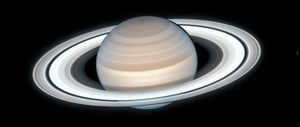Shropshire Sky at Night – August
At last we have planets in the evening sky! There’s been an absence of worlds to chase unless you are an early bird.
However, for the rest of this year we are treated to a procession of planets that will brighten up our skies, starting with Saturn, which is at its closest to Earth this month.
Saturn is the planet that the general public and budding astronomers most want to view through a telescope, quite rightly so!
Stunning Saturn is at opposition on the 14th offering the best viewing opportunity of the year. The sight of the most beautiful planet in the Solar System with its spectacular rings drifting into view is one never to be forgotten.

Its giant moon Titan, together with a number of other satellites, are easily spotted through amateur instruments, tracking retrograde (east to west) among the stars of Capricornus, low in the south east just after sunset, so realise your dreams and make the effort.
Jupiter, the king of the planets, is now more accessible at a more sociable hour as one of the most observer-friendly planets. It is bright and large enough for a small telescope to reveal its contrasting dark and light belts.
Its retrograde motion through the constellation of Cetus low in the east makes it easy to spot as it heads towards midnight, although the full moon mid-month might hinder your observations.
Mars now rises before midnight, making its appearance in the constellation of Aries as it heads towards Taurus. The bright red planet is easy to spot, unlike Venus which surrenders its morning brightness as it succumbs to the dawn twilight.
The myths and legends surrounding constellations always astound, with Cygnus (the Swan) being no exception. Commemorating the occasion when Zeus disguised himself as a swan to seduce Leda (wife of King Tyndareus of Sparta) who gave birth to two eggs containing mortal and immortal offspring, represented by Castor and Pollux, it is the premier constellation of the summer, used as a signpost by many stargazers.
Deneb forms the tail of the Swan, itself forming part of an asterism referred to as the summer triangle, which is a noticeable pattern of stars, high in the sky. This pattern consists of three bright stars in three separate constellations. Together with Deneb we have Vega in the constellation Lyra the Harp, and Altair in the constellation Aquila the Eagle.
The Swan's head is marked by Albireo, one of the most beautiful double stars in the sky and easily split with a small telescope or binoculars.
The Perseid meteor shower, the most anticipated shower of the year, is blighted this year by the full moon on the 12th, the night before the predicted maximum. The parent comet responsible for the Perseid meteor shower is a rather large comet called 109P/Swift-Tuttle, orbiting the Sun approximately every 133 years, leaving an abundance of debris resulting in numerous bright meteors that often leave long light trains, so let’s hope.
Steve Szwajkun FRAS, Shropshire Astronomical Society





